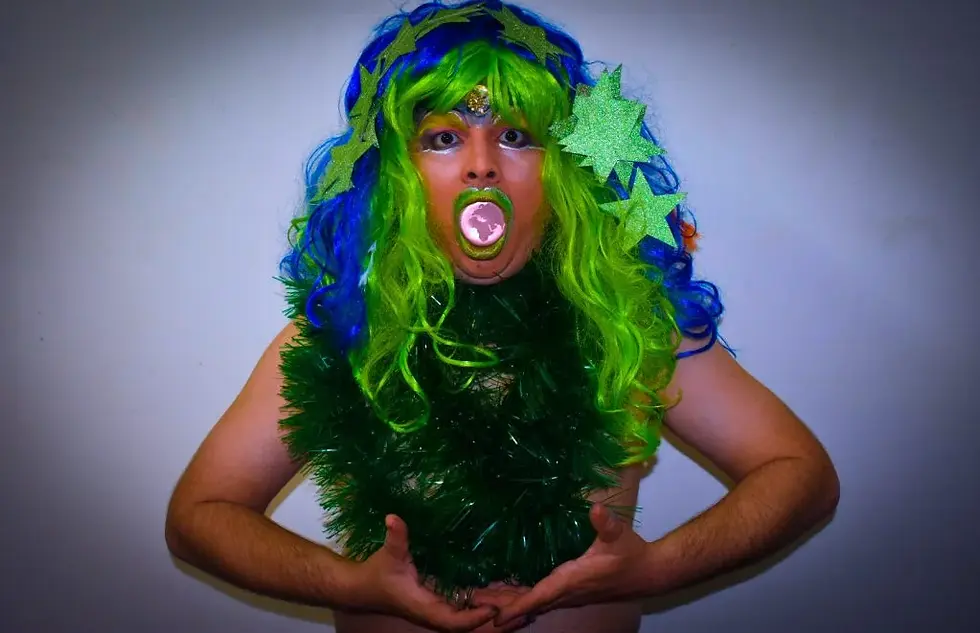Dasa Mahavidya: Exploring Divine Femininity Through Drag
- pcsastrys4

- Jul 7
- 3 min read
As a drag artist deeply connected to Indian classical traditions, I’ve always been fascinated by the Dasa Mahavidya—the ten fierce forms of Goddess Shakti in Hindu philosophy. These goddesses aren’t just symbols of power; they represent rebellion, sexuality, rage, and freedom from societal norms.
In my drag, I find a powerful connection with these forms. When I embody these goddesses, I’m not just dressing up—I’m stepping into stories that break gender expectations and embrace both masculine and feminine energies.
dical to teach. Chhinnamasta, for instance, holds her own decapitated head, symbolizing sacrifice and self-awareness. For me, that speaks to the act of shedding the “self” in drag, performing not as man or woman but as something more fluid and divine.
In Indian mythology, gender has always been fluid. From Mohini to Ardhanarishvara, we’ve always had stories that blur binaries. Drag, for me, is a continuation of that legacy. It’s not about impersonation—it's about transformation and worship through art.
This blend of bhakti (devotion) and bold performance creates a sacred rebellion. Through drag, I channel the fierce feminine and reclaim spiritual space for queer and gender-fluid people like me.

Kali is the goddess of destruction and time. In drag, she reminds me of shedding old skins—destroying binaries, expectations, and outdated roles. Her unruly hair, dark skin, and bloodied tongue inspire performances that don’t aim to please but to shock, shake, and awaken. She’s the rawest form of rage and resistance, and in her spirit, I let my drag get wild, messy, and unapologetic.

Tara is the guiding star—she represents compassion even in chaos. When I embody Tara, my drag becomes a form of healing. She reminds me that performance can nurture and teach. In her blue body and open arms, I see the grace that exists in queerness, in listening, in being present for others. Tara is drag that holds space.

Bhuvaneshwari is the space where the world exists. In drag, she becomes the stage, the presence that fills a room without speaking. She is expansive and inclusive—qualities I channel when creating performances that make everyone feel seen. She’s the mother of possibilities, the queen of inclusivity.

Shodashi is beauty in its most radiant form. But her beauty isn’t passive—it’s power. In her, I reclaim femme aesthetics in drag, the lush sarees, the glitter, the seductive grace. She is the goddess who turns heads and shifts perceptions. Shodashi allows me to play with hyper-femininity without being boxed in by it—because beauty, too, is a weapon.

Bhairavi is rage turned sacred. She is the blood-boiling scream of someone silenced for too long. My drag becomes Bhairavi when I channel anger—not as aggression, but as awareness. Through her, I speak truth to power. Her blood-red presence becomes a metaphor for menstruation, pain, protest, and politics.

Bagalamukhi is silence as power. She stops lies, halts harm, and brings justice through stillness. In her essence, my drag sometimes speaks nothing—but everything is said through presence, through a glare, through a gesture. She reminds me that sometimes, the boldest acts are quiet.

Chhinnamasta holds her own severed head—radical, grotesque, and deeply symbolic. She teaches me that to find truth, we must lose ego. Drag is decapitation of identity: we cut off societal names and expectations to become something truer. Her imagery fuels my tranimal drag—disruptive, divine, and designed to confront comfort.

Dhumavati is the goddess of loss, rejection, and survival. In a world that often discards queer people, she is the reminder that power exists in what’s left behind. I channel her when I embrace imperfections, when I perform grief, and when I wear decay as decor. She is old age, loneliness, and resistance to beauty norms—all powerful themes in my drag.

Matangi is the goddess of spoken word, art, and music—especially from the margins. She represents everything rejected: leftovers, impurities, and untouchability. My drag aligns with her deeply. She is the voice of the queer performer, the reclaimed space in classical music, the dirty dancer who becomes divine through rhythm. She is drag as protest and poetry.

Kamala is often equated with Lakshmi, but her energy is deeper. She is wealth in all its forms—abundance, creativity, queerness. In drag, I see her when I’m thriving despite scarcity, when my art shines brighter than money. She reminds me that queer joy is a form of prosperity, and existing loudly is the greatest luxury.




Comments